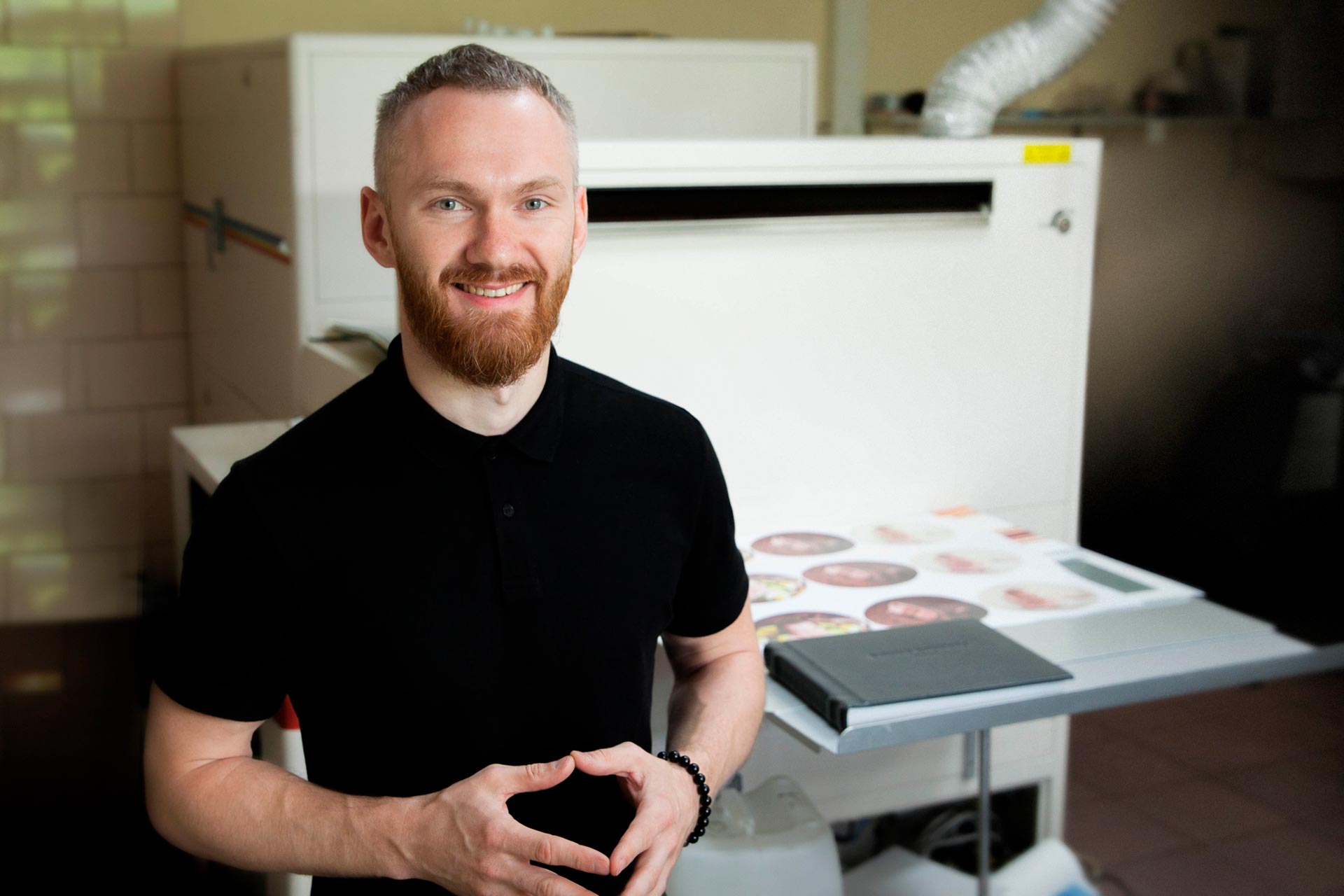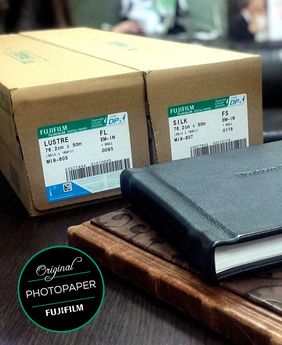Evgeniy Zadokhin – Fotodom
Hero of the lab

Who is/ are Fotodom?
Fotodom is a company producing photobooks for professional photographers. The company was founded in 2006. Basically, customers come from the B2B segment, but there are also options for B2C. The main focus is premium quality photobooks. The company works with the markets of Russia and Belarus, and has also launched an international project.
Projects
- Photobooks for photographers regardless of the shooting direction https://fotodomby.ru
- Photobooks for newborn and family photographers: https://my-baby-book.ru/
- Service for the end consumers (customers). The target audience is brides who, for some reason, were left without a photobook from the photographer: http://iloveyoubook.ru/
- International service for photographers with worldwide delivery: http://absolutalbums.com/
Who is Evgeniy?
Evgeniy Zadokhin – co-founder and product manager. The one who is involved in all the processes in the company: from the development of new services, to training seminars and webinars. My main task is the development of the company.
What has inspired you to enter the Photographic printing business?
It all started in 2003 when we did not know the word “photobook”, but we already had a retail printing business. Then digital cameras and the Internet came to our country.
At first, people began to print more than the usual 36 photos because the flash-card allowed them to save hundreds of them, but the habit of storing everything on paper had still not disappeared.
But by 2005, everyone understood that it was not necessary to print photos on paper, because you can store them on a CD, DVD or upload them to Facebook.
Then we had two options: perish or evolve. We studied the photo industry market and world experience and realised that the future was in photobooks.
Moreover, this is a product that is pleasant to deal with. Photobooks are a good and noble cause.
Could you tell us your professional background?
In 2006, Fotodom was created and consisted of only 4 people. Each of us had a role. Someone managed production processes, another person managed accounting, and on my business card was written “project manager.”
In the very beginning, I had to do literally everything: a website, run social networks, run ads, develop cover collections, etc. We were obsessed with the idea of introducing photobooks to people who did not know what they were, to make them fall in love, and to convince them that they were necessary.
Now the company employs about 40 people (for photobooks). We survived several economic crises, including the global one in 2015, but this has only made us stronger and more confident against the backdrop of competitors.
Now the team includes designers, SMM marketers, and other guys, thanks to whom the whole mechanism works. I am engaged in strategic planning and turning “plans” into “reality”.
Can you tell us what you are most passionate about within photography or printing business?
I’m not a photographer. It just so happened that our company does not have a single photographer. This allowed us to change the approach to photobooks: to consider them, not only as a result of the photographer’s creativity, but also as an effective business tool.
I give speeches on this topic for photographers and talk about how you can use photobooks in work and increase income with them.
How do you think, digitization has influenced the photographic printing business?
It has certainly influenced it. And continues to influence it.
I could point out several steps:
- At first everything analogue (including photos) sought to become digital and go to the internet, to the clouds. At this stage, the number of prints decreased and the fight for rare clients began by dumping.
- Then the opposite process followed: all digital products were sought out to become tangible objects. There was a huge number of print services from Instagram, etc.
- Now, obviously, we have come to the conclusion that during the evolution of photography from print to digital and vice versa, a new generation has grown, for which the word “photo” is primarily a picture on the device’s display, but not a print on paper.
A printed photo today is something rare, unusual and, as a result, expensive. Printing will no longer be mandatory and massive, but it will be amazing and desirable.
Photos have moved from everyday objects to the “gifts” category. Accordingly, the photo business has changed.
What do you like most about Fujifilm Original Photo Paper?
Since our main area is the premium segment, then of course we are only talking about the highest quality technologies and materials. This applies to both materials for the manufacture of covers and materials for printing pages on the album.
Classical photo printing is certainly a leader in quality, so when creating premium photobooks, we use only chemical photo prints on original Fujifilm paper.
Do you have any favourite Fujifilm Original Photo Paper type?
The Fujifilm DP2 papers we work with always give excellent results. A stable result requires professionalism. We use Lustre and Silk. Statistics from our CX system say that 70% of our customers like Silk more.
How do you see the future?
if the question is about the future of the photo industry, then the answer is as follows:
The role of the photographer of yesterday was to have a professional technique and image processing skills. All this is now a thing of the past. Very soon everyone with a smartphone with an application for $1.99 will be able to make a beautiful picture. Artificial intelligence will fully take over these functions.
The role of the photographer of tomorrow is to create the necessary mood and direct what is happening during the shoot.
I think that in the professional segment, printed photography will be in demand, as an excellent driver for selling the result of the photographer’s work. As something very rare and inaccessible to the average user.
At the same time, in the amateur segment, the fusion of print and digital content will definitely happen due to the introduction of AR (augmented reality).
When you point your smartphone at a photo in an album and it comes to life in a video or animation. Now for this you need to download additional software, scan a QR code, etc. It seems to me that things will go much faster when Apple, for example, adds this function to all its devices by default (in a year or two, I think).
And the next step is the abolition of the device (smartphone). Glasses with augmented reality will take over all the functions of a smartphone and then albums in symbiosis with technology of a living picture will be a logically complete product.
If the question is about the future of our company, then the answer is as follows:
Many photographers from Russia and Belarus are moving to live in other countries, trying to find a producer of photobooks there with the same quality and price as ours, but they don’t find it. And then they continue to cooperate with us, even while being on the other hemisphere of the planet.
We want to expand our geography and become an international service. This is the main ambitious goal for the near future – to make photobooks from Fotodom accessible to photographers from around the world.
And when the guys from the team of Elon Musk move to Mars and want a photobook, we will deliver them there!
What advice would you give to upcoming photographers?
Strive to give your customer an unattainable level of service. The stunning quality of the end result of shooting in the form of a photobook is exactly what your customer cannot do for him or herself. Only you can do this for him or her.

